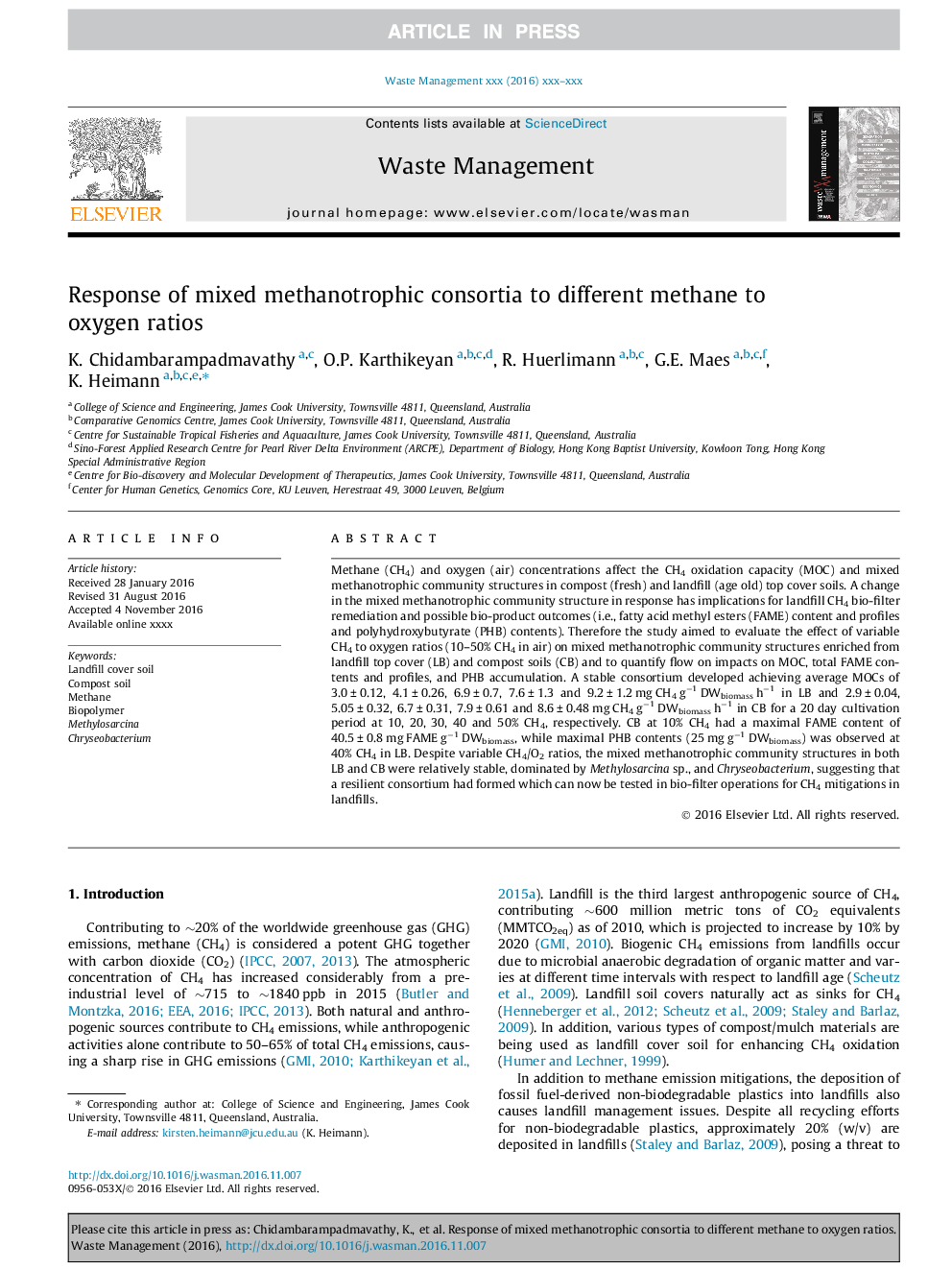| Article ID | Journal | Published Year | Pages | File Type |
|---|---|---|---|---|
| 5756956 | Waste Management | 2017 | 9 Pages |
Abstract
Methane (CH4) and oxygen (air) concentrations affect the CH4 oxidation capacity (MOC) and mixed methanotrophic community structures in compost (fresh) and landfill (age old) top cover soils. A change in the mixed methanotrophic community structure in response has implications for landfill CH4 bio-filter remediation and possible bio-product outcomes (i.e., fatty acid methyl esters (FAME) content and profiles and polyhydroxybutyrate (PHB) contents). Therefore the study aimed to evaluate the effect of variable CH4 to oxygen ratios (10-50% CH4 in air) on mixed methanotrophic community structures enriched from landfill top cover (LB) and compost soils (CB) and to quantify flow on impacts on MOC, total FAME contents and profiles, and PHB accumulation. A stable consortium developed achieving average MOCs of 3.0 ± 0.12, 4.1 ± 0.26, 6.9 ± 0.7, 7.6 ± 1.3 and 9.2 ± 1.2 mg CH4 gâ1 DWbiomass hâ1 in LB and 2.9 ± 0.04, 5.05 ± 0.32, 6.7 ± 0.31, 7.9 ± 0.61 and 8.6 ± 0.48 mg CH4 gâ1 DWbiomass hâ1 in CB for a 20 day cultivation period at 10, 20, 30, 40 and 50% CH4, respectively. CB at 10% CH4 had a maximal FAME content of 40.5 ± 0.8 mg FAME gâ1 DWbiomass, while maximal PHB contents (25 mg gâ1 DWbiomass) was observed at 40% CH4 in LB. Despite variable CH4/O2 ratios, the mixed methanotrophic community structures in both LB and CB were relatively stable, dominated by Methylosarcina sp., and Chryseobacterium, suggesting that a resilient consortium had formed which can now be tested in bio-filter operations for CH4 mitigations in landfills.
Related Topics
Physical Sciences and Engineering
Earth and Planetary Sciences
Geotechnical Engineering and Engineering Geology
Authors
K. Chidambarampadmavathy, O.P. Karthikeyan, R. Huerlimann, G.E. Maes, K. Heimann,
